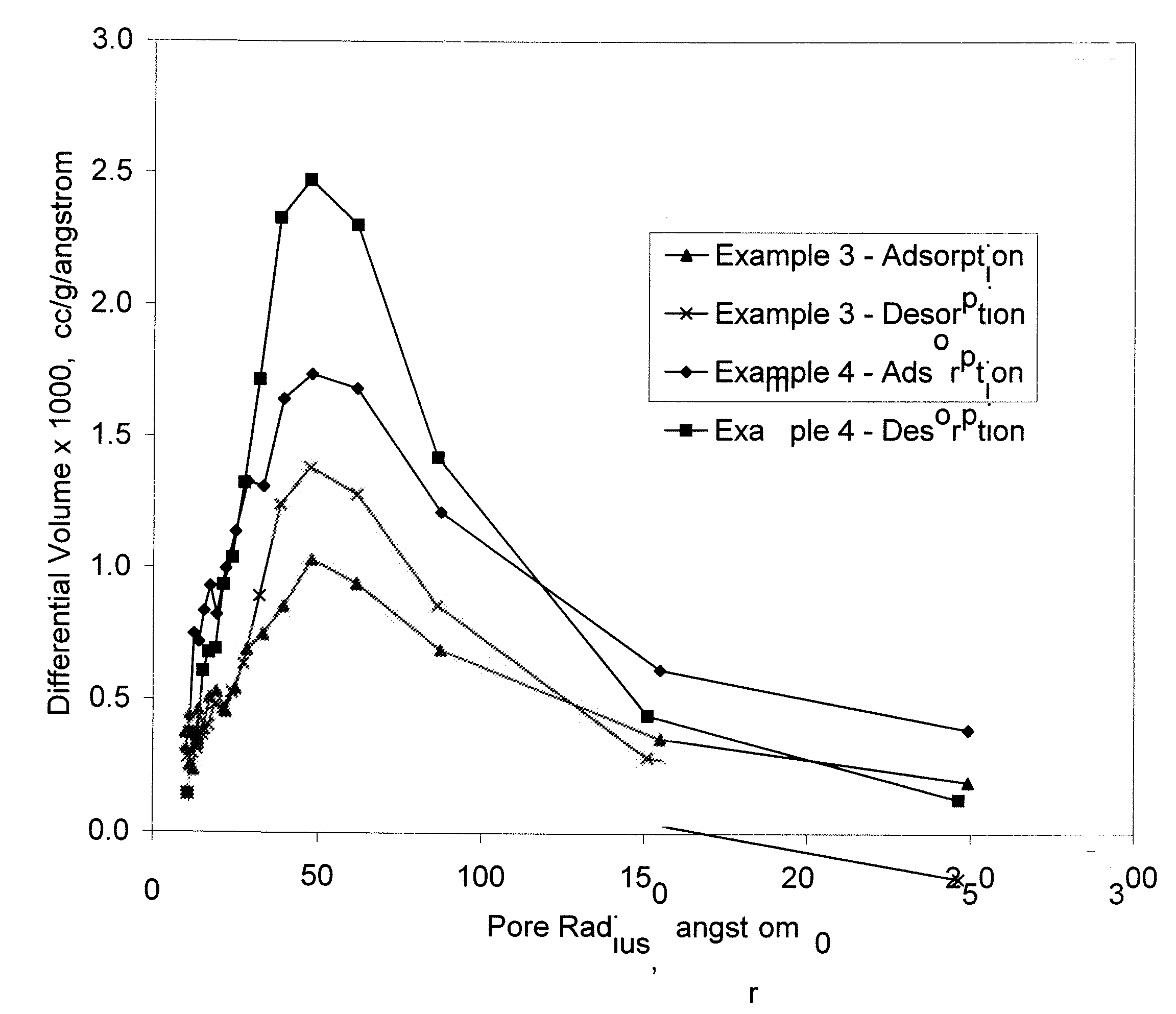Selective Hydrogenation Process Using Layered Catalyst Composition and Preparation of Said Catalyst
a technology of layered catalysts and hydrogenation processes, applied in the field of selective hydrogenation of hydrocarbons, can solve the problems of not producing the desired detergent precursors, and achieve the effects of reducing the capital cost of the process, high space velocities, and high space velocities
- Summary
- Abstract
- Description
- Claims
- Application Information
AI Technical Summary
Benefits of technology
Problems solved by technology
Method used
Image
Examples
example 1
[0057]One catalyst of the invention was prepared by impregnating a cordierite sphere having a 100 micron outer layer of alumina with a liquid solution of palladium nitrate, copper nitrate and potassium nitrate. The resulting solution was evaporated to dryness and the sample was calcined at 450° C. (842° F.). The sample was then reduced at 200° C. (392° F.) with hydrogen. Standard impregnation conditions and techniques were employed and the following metal loadings based on the weight of the catalyst were achieved: 0.02 wt-% Pd, 0.038 wt-% Cu and 0.33 wt-% K.
example 2
[0058]A second catalyst of the invention was prepared by impregnating a cordierite sphere having a 100 micron outer layer of alumina with a liquid solution of palladium nitrate, silver nitrate and potassium nitrate. The resulting solution was evaporated to dryness and the sample was calcined at 450° C. (842° F.). The sample was then reduced at 200° C. (392° F.) with hydrogen. Standard impregnation conditions and techniques were employed and the following metal loadings based on the weight of the catalyst were achieved: 0.02 wt-% Pd, 0.065 wt-% Ag, and 0.33 wt-% K.
[0059]The diolefin conversion and selectivity of the catalysts prepared in Examples 1 and 2 were studied using as feed the product of a commercial catalytic dehydrogenation unit. Based on analyses of other similar feeds from the same source, the feed used in Examples 1 and 2 is believed to have the composition shown in Table 1. A volume of the catalyst to be tested was loaded in a reactor, and the feed flow was started unde...
example 3
[0064]The catalyst of Example 1 was studied using desorption and adsorption techniques to determine the pore size distribution, the average pore radius, the surface area and the total pore volume of the catalyst. The results of the studies are shown in Table 3.
PUM
| Property | Measurement | Unit |
|---|---|---|
| temperature | aaaaa | aaaaa |
| thickness | aaaaa | aaaaa |
| temperatures | aaaaa | aaaaa |
Abstract
Description
Claims
Application Information
 Login to View More
Login to View More - R&D
- Intellectual Property
- Life Sciences
- Materials
- Tech Scout
- Unparalleled Data Quality
- Higher Quality Content
- 60% Fewer Hallucinations
Browse by: Latest US Patents, China's latest patents, Technical Efficacy Thesaurus, Application Domain, Technology Topic, Popular Technical Reports.
© 2025 PatSnap. All rights reserved.Legal|Privacy policy|Modern Slavery Act Transparency Statement|Sitemap|About US| Contact US: help@patsnap.com


